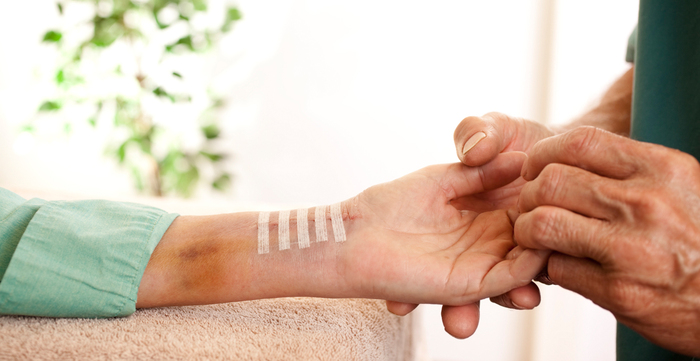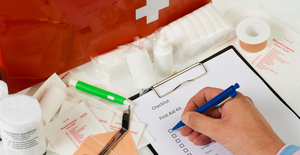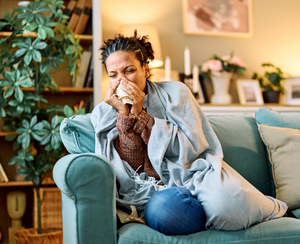Key points
- Wounds such as lacerations, punctures, skin tears, and abrasions may require stitches.
- The need for stitches is determined by the width, depth, and location of the wound.
- The stitching procedure involves cleaning the wound, numbing the area, and then applying stitches, staples, or glue.
- Aftercare for stitches includes keeping the area dry, changing bandages regularly, and using ointments to aid healing.
- Aftercare for stitches involves keeping the area dry, changing bandages regularly, using ointments to aid healing, and following instructions on when to return to the clinic for suture removal and how often to take pain medication.

How do you know if a wound or cut requires stitches? Where should you go to get stitches? What should you expect during the procedure? How should I take care of them at home? Below are five things you should know about stitches and why you shouldn't be frightened.
What Are Common Wounds That Require Stitches?
There are certain wounds that may require stitches, including:
- Lacerations – What we call cuts, urgent care center physicians call lacerations.
- Punctures – Punctures, unlike lacerations or cuts, are wounds that go in and come back out.
- Skin Tears – Doctors call these avulsions and these are flap-type wounds.
- Abrasions – Unlike a laceration, an abrasion is more of a scratch-type wound.
How do I Know if I Need Stitches?
There are some ways to tell if you need stitches, however, if you are unsure it's best to find an urgent clinic (or a retail clinic if stitches are something they treat) and let the experts decide.
- Width of the wound – If the wound can't be closed easily by gently squeezing it, then stitches are probably required to close the wound and help it heal correctly.
- Depth – The depth of a wound is often hard to judge. If you can see yellow-fatty tissue, you should get the wound checked out immediately.
- Location – Locations of cuts, abrasions, or lacerations may determine if you need stitches or not. A good rule of thumb is to consider the range of movement where the wound exists. For example, we move fingers constantly so wounds here may need stitching more than another part of the body that we don't use as much. Do not use this as a final judgment in deciding whether you need stitches, however.
The above points are just a guide, especially for children's cuts. Children may not want parents or caretakers to touch the wound and should get immediate pediatric urgent care.
What Happens in the Examination?
Urgent care doctors or nurse practitioners will first perform an examination of the wound to make sure bones, ligaments, or arteries are not affected. They may take an x-ray if they feel the cut has impacted other areas. X-rays can also determine if a foreign body is within the wound like metal, wood, etc. Once it's deemed the wound needs stitches only, the stitching procedure will proceed.
What to Expert During the Stitches Procedure
First off, depending on the depth, width and type of wound, doctors will determine whether to use conventional stitches (sutures), staples, glue or sterilized strips. Once the physician decides on the method, the procedure is as follows:
- Gently cleaning the injured area with saline, water, and bacterial soap
- A local anesthetic is given to numb the area so patients don't feel the suture procedure. These anesthetics are quick and may sting but only for a moment. Once the area is numb, patients won't feel any pain or discomfort.
- Doctors may further irrigate the area to clear it of debris.
- The physician performs the suture procedure based on determining what is best, stitches, staples, etc.
Caring For Stitches Once I'm Home
Once you're discharged from the urgent care facility, you will be given instructions on how to care for the sutured area. These instructions include:
- Keeping it free from moisture and water.
- Changing bandages on a regular basis.
- Using ointments to help healing.
- Instructions on when to return to the clinic to have sutures removed.
- How often you should take acetaminophen or ibuprofen for pain.
You may receive additional instructions based on the injury's severity.
When cuts and abrasions occur, it's best not to guess. Seek immediate medical care. If stitches or sutures are necessary, these five steps should ease your mind, especially if you've never had sutures before.
FAQs
What types of wounds typically require stitches?
Lacerations, punctures, skin tears, and abrasions often require stitches.
How can I tell if a wound needs stitches?
If the wound is wide, deep, or located in a high-movement area, it likely needs stitches. However, always consult a healthcare professional to be sure.
What happens during the stitching procedure?
The area is cleaned and numbed, then the doctor will apply stitches, staples, or glue based on the type and severity of the wound.
How should I care for stitches at home?
Keep the area dry, change bandages regularly, use healing ointments, and follow any additional instructions given by your healthcare provider.
When should I seek medical attention for a wound?
If you're unsure whether a wound needs stitches, it's best to seek immediate medical care to prevent complications.
What should I do if my child has a wound and is resistant to letting me examine it?
In cases where children have cuts and are resistant to parents or caretakers touching the wound, it is recommended to seek immediate pediatric urgent care.
What factors determine the method of stitching used by doctors?
The depth, width, and type of wound are factors that doctors consider when deciding whether to use conventional stitches (sutures), staples, glue, or sterilized strips.
What should I do if I'm unsure whether a wound needs stitches?
If you're unsure whether a wound needs stitches, it's best to seek professional medical help immediately. You can find an urgent clinic or a retail clinic that treats stitches and let the experts decide.









